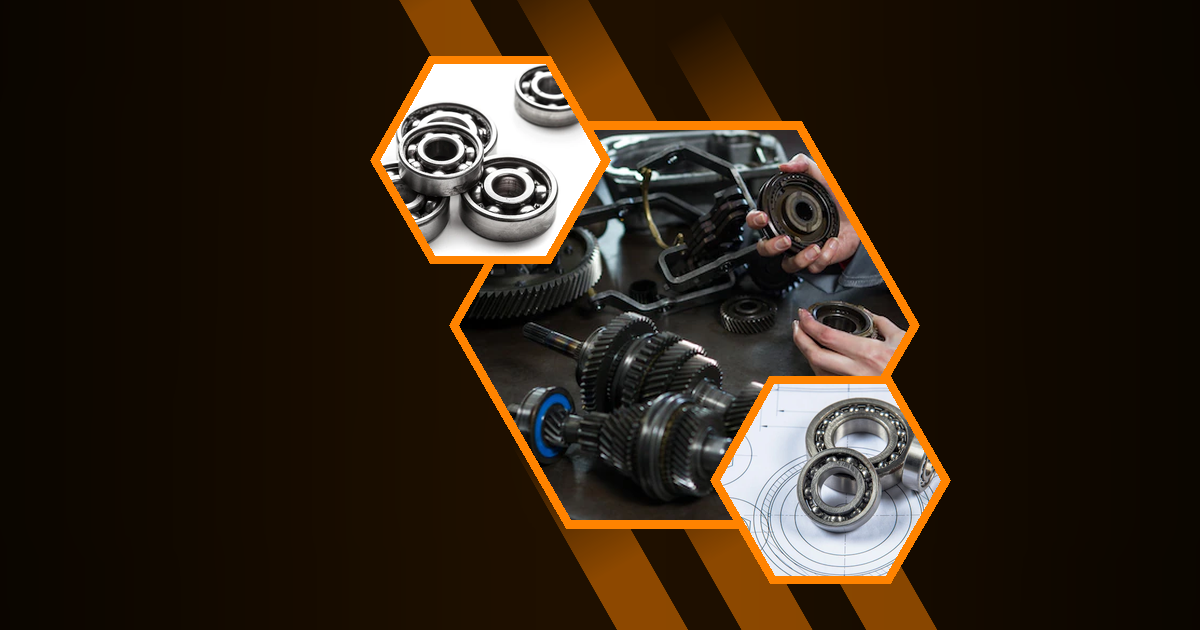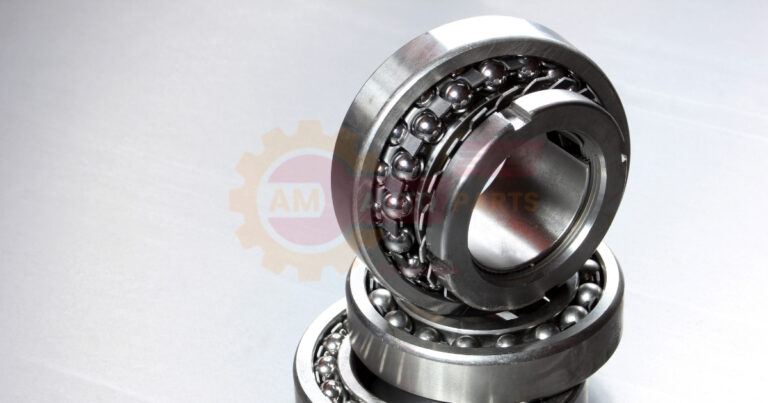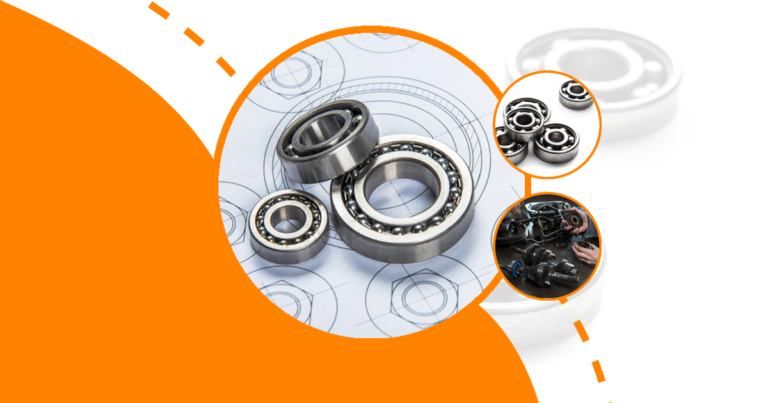Replacing motor bearings or car bearings is a crucial maintenance task that can significantly enhance the performance and longevity of your vehicle. Understanding the process and the necessary tools can make this task manageable, even for beginners. This guide will walk you through the steps of how to replace motor bearings, how to replace car bearings, and how to replace bearings on a car.
Understanding Motor and Car Bearings
Bearings are essential components in vehicles, facilitating smooth movement and reducing friction between moving parts. They are found in various parts of a vehicle, including the engine, wheels, and transmission.
Types of Bearings in Vehicles
There are several types of bearings used in vehicles, each serving a specific purpose. Common types include ball bearings, roller bearings, and tapered bearings. Ball bearings are typically used in applications with lower loads, while roller and tapered bearings are used in high-load applications.
- Ball Bearings : Ideal for low-load applications.
- Roller Bearings : Suitable for high-load applications.
- Tapered Bearings : Used in applications requiring both radial and axial loads.
Signs of Worn Bearings
Recognizing the signs of worn bearings can prevent further damage to your vehicle. Common symptoms include unusual noises, vibrations, and uneven tire wear. If you notice any of these signs, it’s crucial to inspect and replace the bearings promptly.
- Unusual Noises : Grinding or humming sounds.
- Vibrations : Felt through the steering wheel or vehicle body.
- Uneven Tire Wear : Indicates misalignment or bearing issues.
Tools and Materials Needed for Bearing Replacement
Having the right tools and materials is essential for a successful bearing replacement. This section outlines the necessary equipment and recommended replacement parts.
Essential Tools for the Job
To replace bearings, you’ll need a set of basic tools, including a jack, socket set, and bearing puller. These tools will help you safely remove and install bearings without damaging other components.
- Jack and Jack Stands : For lifting and securing the vehicle.
- Socket Set : For removing bolts and nuts.
- Bearing Puller : For extracting old bearings.
Recommended Replacement Parts
When replacing bearings, it’s important to use high-quality parts to ensure durability and performance. Consider OEM (Original Equipment Manufacturer) parts or reputable aftermarket options from suppliers like AM Autoparts.
- OEM Bearings : Ensure compatibility and quality.
- Aftermarket Bearings : Cost-effective alternatives with reliable performance.
Preparing Your Vehicle for Bearing Replacement
Proper preparation is key to a smooth bearing replacement process. This involves taking safety precautions and accessing the engine compartment.
Safety Precautions
Safety should always be your top priority when working on a vehicle. Wear protective gear, such as gloves and safety glasses, and ensure the vehicle is securely lifted and supported.
- Wear Protective Gear : Gloves and safety glasses.
- Secure the Vehicle : Use jack stands for stability.
- Disconnect the Battery : Prevents electrical hazards.
Accessing the Engine Compartment
To replace motor bearings, you’ll need to access the engine compartment. This may involve removing components like the air filter and engine cover to reach the bearings.
- Remove Air Filter : Provides better access to the engine.
- Detach Engine Cover : Allows visibility and access to bearings.
Removing the Old Bearings
Once the vehicle is prepared, the next step is to remove the old bearings. This involves draining fluids and disconnecting components to access the bearings.
Draining Fluids and Disconnecting Components
Before removing bearings, it’s important to drain any fluids that may interfere with the process. Disconnect components like the drive belt and alternator to create space for bearing removal.
- Drain Fluids : Prevents spills and contamination.
- Disconnect Drive Belt : Provides access to bearings.
- Remove Alternator : Creates space for bearing extraction.
Extracting Worn Bearings
Using a bearing puller, carefully extract the worn bearings from their housing. Take care not to damage surrounding components during this process.
- Use Bearing Puller : Ensures safe removal.
- Avoid Damage : Be cautious of surrounding parts.
Installing New Bearings
With the old bearings removed, it’s time to install the new ones. This involves cleaning and inspecting bearing surfaces and using proper installation techniques.
Cleaning and Inspecting Bearing Surfaces
Before installing new bearings, clean the bearing surfaces to remove any debris or residue. Inspect the surfaces for damage or wear that could affect the new bearings.
- Clean Surfaces : Ensures proper fit and function.
- Inspect for Damage : Prevents future issues.
Proper Installation Techniques
Use a bearing press or similar tool to install the new bearings. Ensure they are seated correctly and aligned with the surrounding components.
- Use Bearing Press : For accurate installation.
- Check Alignment : Ensures smooth operation.
Reassembling and Testing
After installing the new bearings, reassemble the components and test the vehicle to ensure everything is functioning correctly.
Reconnecting Components
Reattach any components that were removed during the bearing replacement process. Ensure all bolts and connections are secure.
- Reattach Drive Belt : Ensures proper engine function.
- Secure Alternator : Prevents electrical issues.
Post-Replacement Checks
Perform a series of checks to confirm the bearings are installed correctly. Listen for unusual noises and test the vehicle’s handling.
- Listen for Noises : Indicates potential issues.
- Test Handling : Ensures smooth operation.
Maintaining Your New Bearings
Proper maintenance can extend the life of your new bearings and prevent future issues. This includes regular lubrication and inspection.
Proper Lubrication Practices
Lubrication is essential for reducing friction and wear on bearings. Use the recommended lubricant and apply it at regular intervals.
- Use Recommended Lubricant : Ensures optimal performance.
- Regular Application : Prevents wear and tear.
Regular Inspection Intervals
Schedule regular inspections to check the condition of your bearings. This can help identify potential issues before they become serious problems.
- Schedule Inspections : Prevents unexpected failures.
- Check for Wear : Identifies early signs of damage.
Common Challenges in Bearing Replacement
Replacing bearings can present several challenges, such as dealing with seized bearings and addressing alignment issues.
Dealing with Seized Bearings
Seized bearings can be difficult to remove and may require additional tools or techniques. Applying penetrating oil and using a bearing puller can help.
- Apply Penetrating Oil : Loosens seized bearings.
- Use Bearing Puller : Facilitates removal.
Addressing Alignment Issues
Improper alignment can lead to premature bearing wear. Use alignment tools to ensure the bearings are correctly positioned.
- Use Alignment Tools : Ensures proper positioning.
- Check Alignment : Prevents uneven wear.
Advanced Bearing Replacement Techniques
For more experienced mechanics, advanced techniques can simplify the bearing replacement process, such as replacing main bearings with the engine in place.
Replacing Main Bearings with the Engine in Place
Replacing main bearings without removing the engine can save time and effort. This technique requires specialized tools and expertise.
- Use Specialized Tools : Facilitates in-place replacement.
- Requires Expertise : Not recommended for beginners.
Changing Rod Bearings Without Full Engine Removal
Similar to main bearings, rod bearings can be replaced without fully removing the engine. This technique is more efficient but requires careful execution. Car Wheel Count Most cars have four wheels attached to help them move smoothly on the road Bearings hub essentials are important parts that help wheels spin smoothly They keep the wheel connected to the car and make sure it turns properly
- Efficient Technique : Saves time and effort.
- Requires Precision : Ensures proper installation.
Choosing Quality Replacement Bearings
Selecting the right bearings is crucial for ensuring long-term performance and reliability. Consider OEM and aftermarket options from trusted suppliers.
OEM vs. Aftermarket Options
OEM bearings are designed to meet the original specifications of your vehicle, while aftermarket options can offer cost savings and comparable performance.
- OEM Bearings : Ensure compatibility and quality.
- Aftermarket Bearings : Cost-effective alternatives.
AM Autoparts Bearing Selection Guide
AM Autoparts offers a wide range of bearings for various vehicle models. Their selection guide can help you find the right bearings for your needs.
- Wide Range of Options : Suitable for different models.
- Selection Guide : Assists in choosing the right bearings.
Frequently Asked Questions
Can you drive a car with bad bearings?
Driving with bad bearings is not recommended as it can lead to further damage and safety risks. It’s important to address bearing issues promptly to avoid costly repairs.
How much does it cost to replace bearings in a car?
The cost of replacing bearings can vary depending on the vehicle model and labor rates. On average, it can range from 00 to 00, including parts and labor.
What are the symptoms of bad bearings in a car?
Symptoms of bad bearings include unusual noises, vibrations, and uneven tire wear. If you notice these signs, it’s important to inspect and replace the bearings.
How long does it take to replace car bearings?
Replacing car bearings typically takes a few hours, depending on the complexity of the job and the experience of the mechanic. It’s best to allocate a full day for the task.
Can you replace bearings with the engine still in the car?
Yes, it’s possible to replace certain bearings with the engine still in the car. This requires specialized tools and techniques but can save time and effort.






